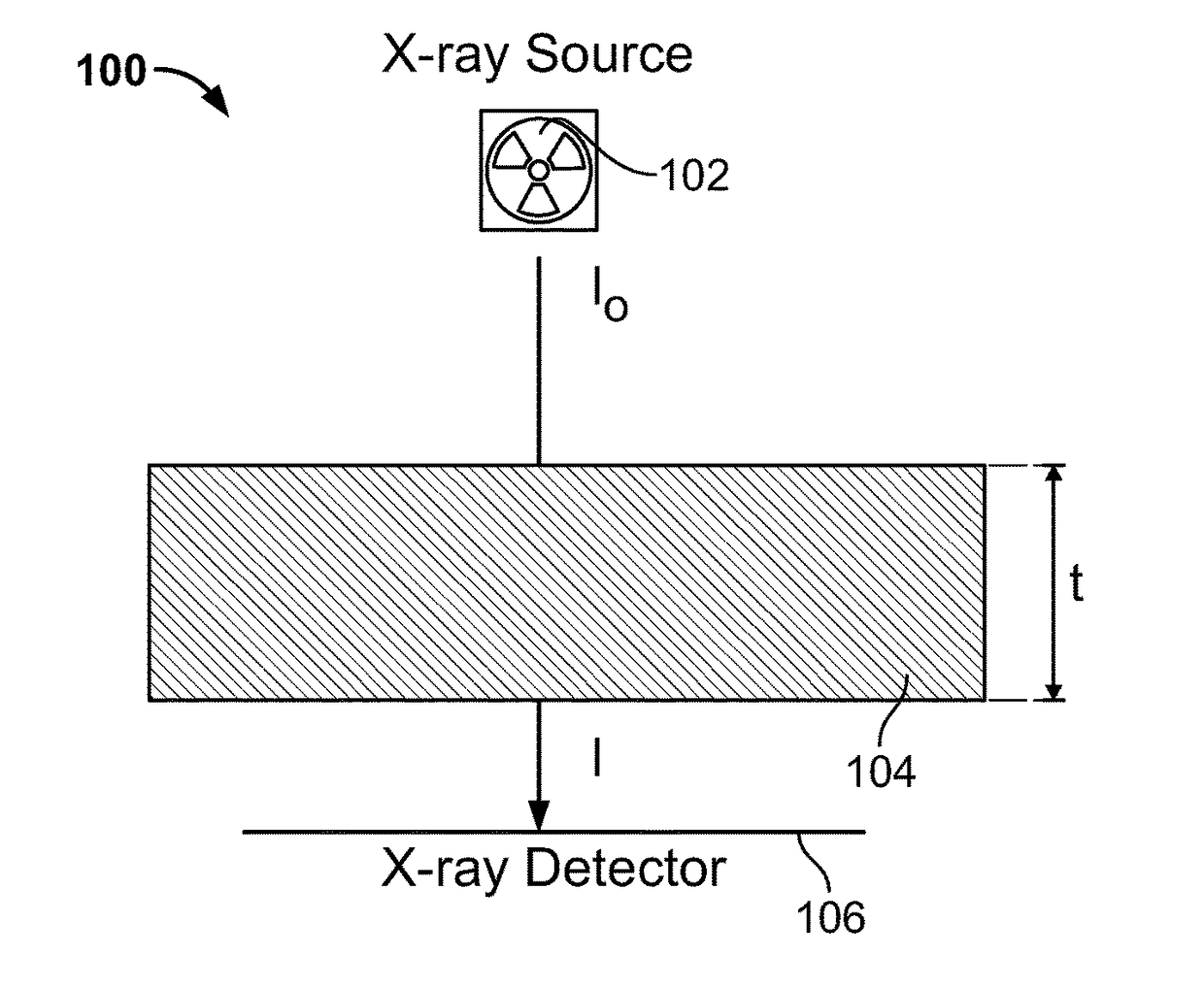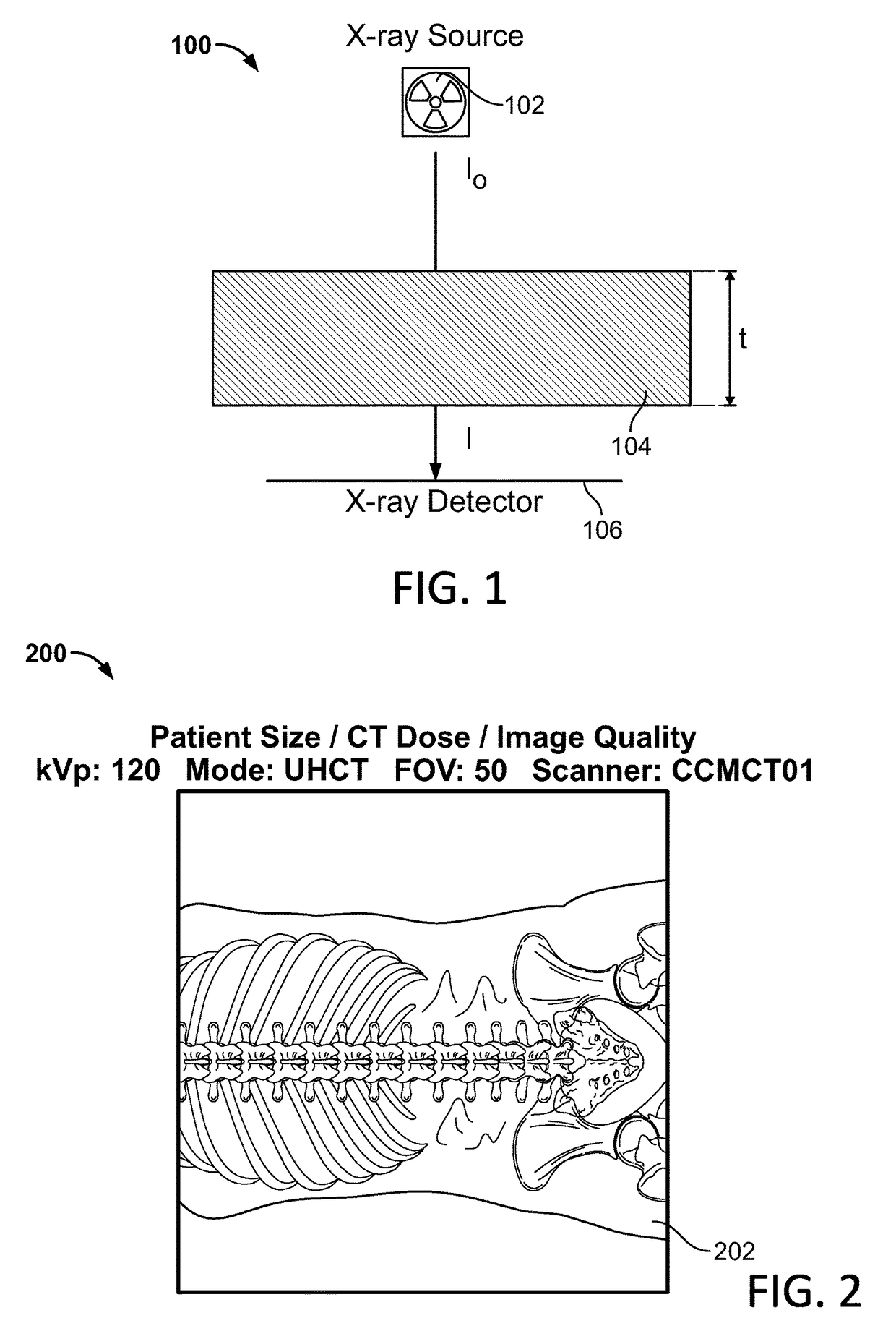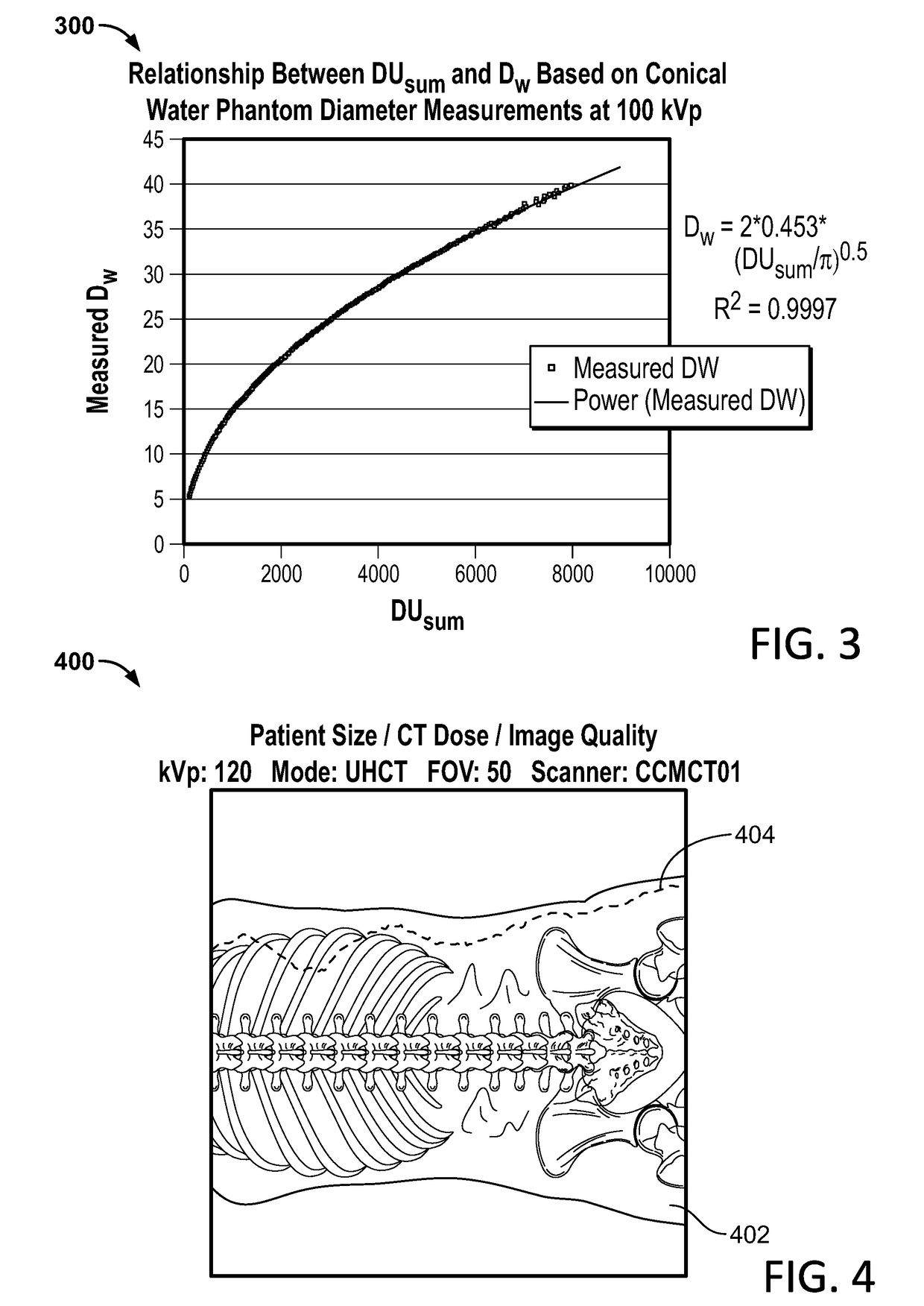Method for consistent and verifiable optimization of computed tomography (CT) radiation dose
a computed tomography and radiation dose technology, applied in the field of computed tomography (ct) method for optimizing radiation dose, can solve the problems of low radiation dose, patient at risk without added diagnostic quality, and inability to obtain image quality measurements for clinical examinations, so as to achieve the effect of minimal disruption in the work flow
- Summary
- Abstract
- Description
- Claims
- Application Information
AI Technical Summary
Benefits of technology
Problems solved by technology
Method used
Image
Examples
Embodiment Construction
[0110]The system provides quantitative image quality assessment to achieve As Low As Reasonably Achievable (ALARA) on a consistent basis for all CT scanners in an organization. The system in the embodiments described below allows Computed Tomography (CT) scanners to incorporate scanner parameters and patient size into calculations to accurately determine the minimum radiation dose necessary to achieve diagnostic image quality. Finally, the embodiments below provide a comprehensive, transparent system to automate, analyze, and monitor the aggregate history of CT scans to ensure proper dosing and image quality across an organization.
Estimation Models
[0111]FIG. 1 depicts the basic schematic of a CT device 100 having an X-ray source 102, and an X-ray detector 106 where I0 is the initial intensity of the X-ray source, I is the Intensity at the X-ray detector after passing through t, a thickness of an object 104; The Beer-Lambert law describes attenuation characteristics of an x-ray beam ...
PUM
 Login to View More
Login to View More Abstract
Description
Claims
Application Information
 Login to View More
Login to View More - R&D
- Intellectual Property
- Life Sciences
- Materials
- Tech Scout
- Unparalleled Data Quality
- Higher Quality Content
- 60% Fewer Hallucinations
Browse by: Latest US Patents, China's latest patents, Technical Efficacy Thesaurus, Application Domain, Technology Topic, Popular Technical Reports.
© 2025 PatSnap. All rights reserved.Legal|Privacy policy|Modern Slavery Act Transparency Statement|Sitemap|About US| Contact US: help@patsnap.com



